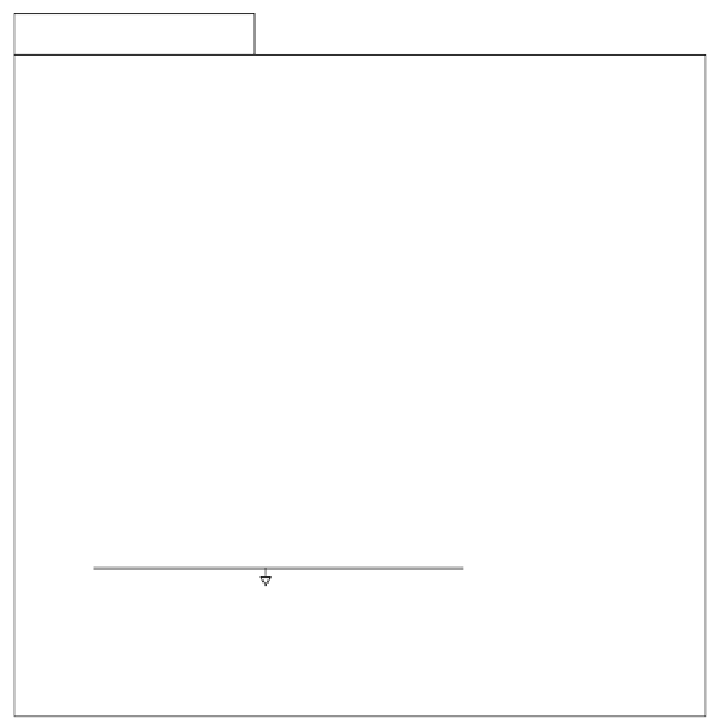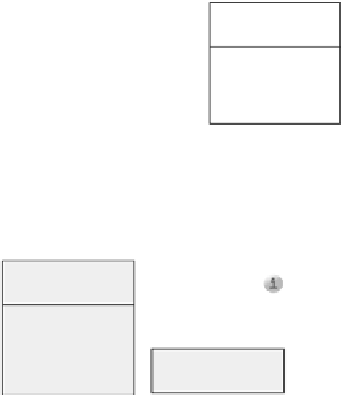Information Technology Reference
In-Depth Information
«IV_InvariantSchema»
InformationObjectTypes
ActionTaken
+performer
0..*
Staff
Contract
+sla
0..*
0..*
SLA
+when : date
+action : ActionTakenKind
+description : String
+startDate : date
+expiryDate : date
+billingInfo : String
1..*
1..*
0..1
RepairOrder
{open <= closed}
Performance
Info
ServiceCentre
User
+MaxOpenOrders : int = 50
0..*
0..*
+orderNumber : String
+open : date
+closed : date
+estimatedClose : date
+status : OrderStatus
0..*
0..*
0..1
+worksFor
Customer
Company
0..1
Loan
{starts <= ends}
1..*
0..*
1..*
Company
UserHandset
LoanHandset
+name : String
+phone : String
+address : Address
+starts : date
+ends : date
+returnTo : Address
+courier : Courier
0..1
0..1
+IMEI : String
0..*
Manufacturer
Courier
SIM
0..1
Handset
0..1
+number : String
+IMSI : String
+MSISDN : String
+contacts : Contact [0..*]
«dataType»
Contact
Memory
0..*
+capacity : int
+contacts : Contact [0..*]
Component
+name : String
+number : String
«enumeration»
PartStatus
Part
«enumeration»
OrderStatus
«enumeration»
ActionTakenKind
+serialNo : String
+status : PartStatus
Broken
Open
SentToManufacturer
UnderInspection
Operational
Unfixable
HandsetWithManufacturer
HandsetReturnedToUser
Closed
Received
InternallyTested
«dataType»
Address
AssignedRepairHandset
...
FIGURE 3.1: Invariant schema showing information object types.
Figure 3.1 shows the ODP information object types of the PhoneMob in-
formation specification. Note that the information specification captures the
information handled by the system, and there is no need to represent the com-
puterized system itself (in contrast to the enterprise viewpoint specification).
The class diagram in figure 3.1 also expresses the allowed relationships
between the information object types. For example, it defines that an infor-
mation object representing a service centre should be related to the informa-
tion objects that represent its staff, to the set of loan handsets owned by the
shop (either in stock, or given to VIP users while their phones get fixed), and
to the set of repair orders for which the centre is responsible. In turn, the
information objects that represent such orders are related to the information
objects that represent the broken handsets, the users that took them to the




































































